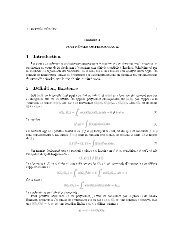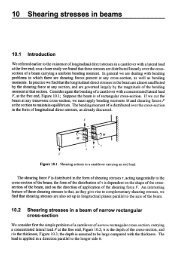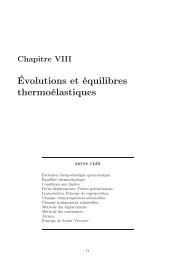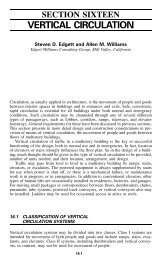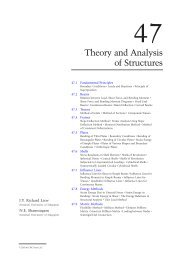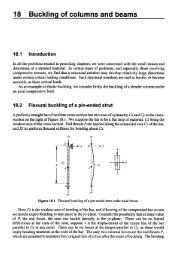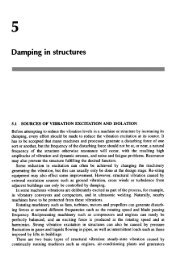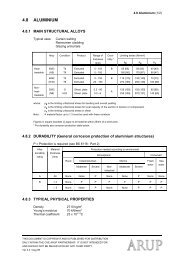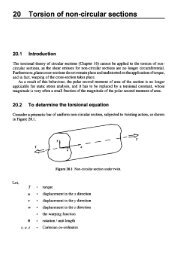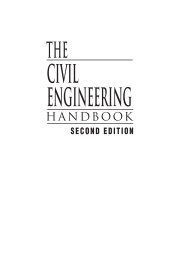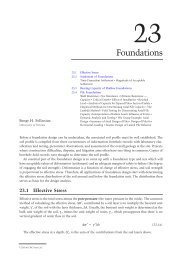Chapter 18: Groundwater and Seepage - Free
Chapter 18: Groundwater and Seepage - Free
Chapter 18: Groundwater and Seepage - Free
Create successful ePaper yourself
Turn your PDF publications into a flip-book with our unique Google optimized e-Paper software.
<strong>Groundwater</strong> <strong>and</strong> <strong>Seepage</strong> <strong>18</strong>-7yBvn yqPn xA0xFIGURE <strong>18</strong>.3 Path of flow.Substituting Eq. (<strong>18</strong>.16), it follows thatwhich states that the total differential d y = 0 <strong>and</strong>Thus we see that the family of curves generated by the function y(x, y) equal to a series of constantsare tangent to the resultant velocity at all points in the flow region <strong>and</strong> hence define the path of flow.The potential [f = – kh + C] is a measure of the energy available at a point in the flow region to movethe particle of water from that point to the tailwater surface. Recall that the locus of points of equalenergy, say, f(x, y) = constants, are called equipotential lines. The total differential along any curvef(x, y) = constant produces<strong>and</strong>------- ∂ y∂ xdx ∂ y+ ------- ∂ ydy = 0y ( x,y) = constant∂ f ∂ fdf = ------ dx + ------ dy = 0∂ x ∂ySubstituting for ∂f/∂x <strong>and</strong> ∂f /∂y from Eqs. (<strong>18</strong>.16), we havev x dx + v y dy = 0dy-----dx=v– --- xv y(<strong>18</strong>.20)Noting the negative reciprocal relationship between their slopes, Eqs. (<strong>18</strong>.19) <strong>and</strong> (<strong>18</strong>.20), we see that,within the flow domain, the families of streamlines y (x, y) = constants <strong>and</strong> equipotential lines f (x, y) =constants intersect each other at right angles. It is customary to signify the sequence of constants byemploying a subscript notation, such as f(x, y) = f i , y(x, y) = y j (Fig. <strong>18</strong>.4).As only one streamline may exist at a given point within the flow medium, streamlines cannot intersectone another. Consequently, if the medium is saturated, any pair of streamlines act to form a flow channelbetween them. Consider the flow between the two streamlines y <strong>and</strong> y + dy in Fig. <strong>18</strong>.5; v representsthe resultant velocity of flow. The quantity of flow through the flow channel per unit length normal tothe plane of flow (say, cubic feet per second per foot) isdQ = v x ds cos q – v y ds sin q = v x dy – v y dx =------- ∂ y∂ ydy ∂ y+ ------- dx∂ x© 2003 by CRC Press LLC



